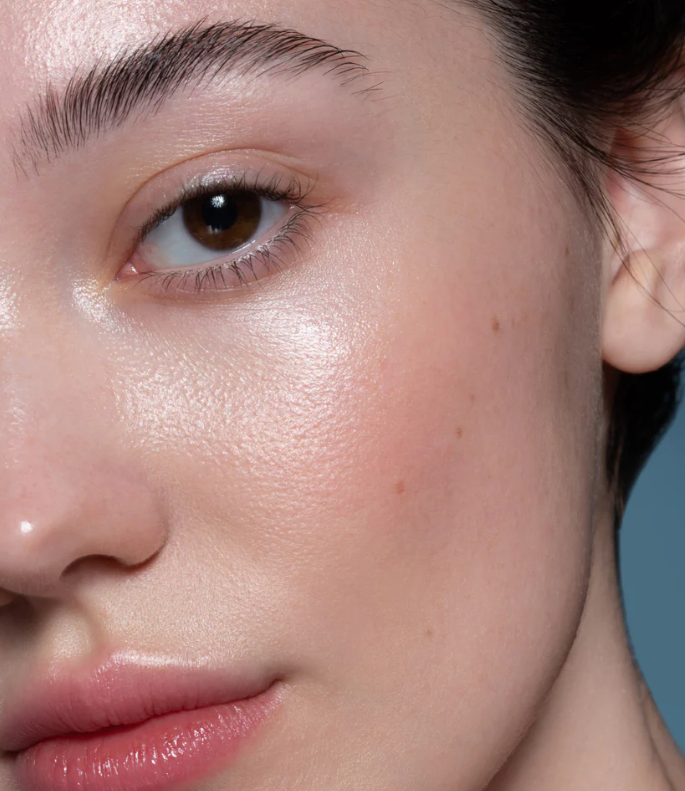There is no such thing as a healthy tan , the resulting colour (including freckles) that you get from being outside in the sun is actually your body’s response to UV damage. One of the key stimulants for melanocyte production of tanning pigment is damaged DNA, the signals get weaker & eventually stop as a result of sustained damage. The melanocytes produce melanin/ pigment on our skin to attempt to protect itself but only after being signalled to do so ,the signal coming from damaged DNA. Further damage is prevented in this way, but there is always some initial damage. Wear a good broad spectrum SPF every day & reapply as needed throughout the day . Preferably use in conjunction with a vitamin C serum - SPF whilst being very important can only do so much , using a vitamin C serum protect against environmental damage , & enhances the protection given by your SPF . Look to your diet also , you also need to have a healthy diet to protect from the inside as antioxidant-rich foods which can really help your skin especially in terms of fighting free radical and UV damage. Some key antioxidant ingredients to look out for are lycopene, which is found in abundance in cooked tomatoes and in watermelon, beta carotene, which is found in spinach and carrots , omega-3, present in nuts, seeds and salmon, and catechin EGCG, which is in green tea beneficial for health and skin protection. #skincare #sun #spf #protect
local_shipping
spa
Free Delivery Over €100
Fast 1-3 days, Ireland only
Book At Wellness Day Spa
auto_awesome
Click here to book
Book At Woulfe Skin Specialists
Click here to book
verified
Dublin's Top Aesthetic Skin Clinic & Day Spa

Sun beds should be banned!! Using a sun bed before the age of 30 increases the risk of melanoma by up to 75% .
Sun exposure does help the body produce necessary vitamin D, but be aware that the cumulative impact of unprotected UV exposure over the years damages the integrity of your skin . Numerous studies have linked overexposure to UV light with skin cancer . Look to supplements and natural sources of the vitamin in your diet, such as in cheese and eggs, or a supplement of vitamin D3 will ensure you keep your levels high. Even a few minutes of sun exposure on your forearms walking the dog or walking the kids to school provides the average individual with enough UV exposure to make ample vitamin D.
There is no such thing as a healthy tan , the resulting colour (including freckles) that you get from being outside in the sun is actually your body’s response to UV damage. One of the key stimulants for melanocyte production of tanning pigment is damaged DNA, the signals get weaker & eventually stop as a result of sustained damage. The melanocytes produce melanin/ pigment on our skin to attempt to protect itself but only after being signalled to do so ,the signal coming from damaged DNA. Further damage is prevented in this way, but there is always some initial damage. Wear a good broad spectrum SPF every day & reapply as needed throughout the day . Preferably use in conjunction with a vitamin C serum - SPF whilst being very important can only do so much , using a vitamin C serum protect against environmental damage , & enhances the protection given by your SPF . Look to your diet also , you also need to have a healthy diet to protect from the inside as antioxidant-rich foods which can really help your skin especially in terms of fighting free radical and UV damage. Some key antioxidant ingredients to look out for are lycopene, which is found in abundance in cooked tomatoes and in watermelon, beta carotene, which is found in spinach and carrots , omega-3, present in nuts, seeds and salmon, and catechin EGCG, which is in green tea beneficial for health and skin protection. #skincare #sun #spf #protect
There is no such thing as a healthy tan , the resulting colour (including freckles) that you get from being outside in the sun is actually your body’s response to UV damage. One of the key stimulants for melanocyte production of tanning pigment is damaged DNA, the signals get weaker & eventually stop as a result of sustained damage. The melanocytes produce melanin/ pigment on our skin to attempt to protect itself but only after being signalled to do so ,the signal coming from damaged DNA. Further damage is prevented in this way, but there is always some initial damage. Wear a good broad spectrum SPF every day & reapply as needed throughout the day . Preferably use in conjunction with a vitamin C serum - SPF whilst being very important can only do so much , using a vitamin C serum protect against environmental damage , & enhances the protection given by your SPF . Look to your diet also , you also need to have a healthy diet to protect from the inside as antioxidant-rich foods which can really help your skin especially in terms of fighting free radical and UV damage. Some key antioxidant ingredients to look out for are lycopene, which is found in abundance in cooked tomatoes and in watermelon, beta carotene, which is found in spinach and carrots , omega-3, present in nuts, seeds and salmon, and catechin EGCG, which is in green tea beneficial for health and skin protection. #skincare #sun #spf #protect



















































